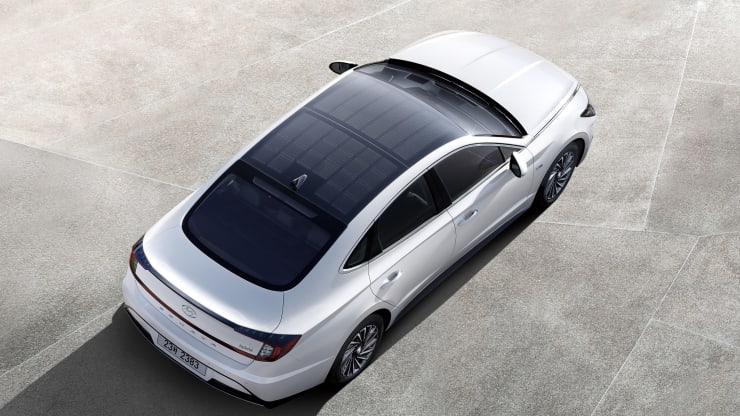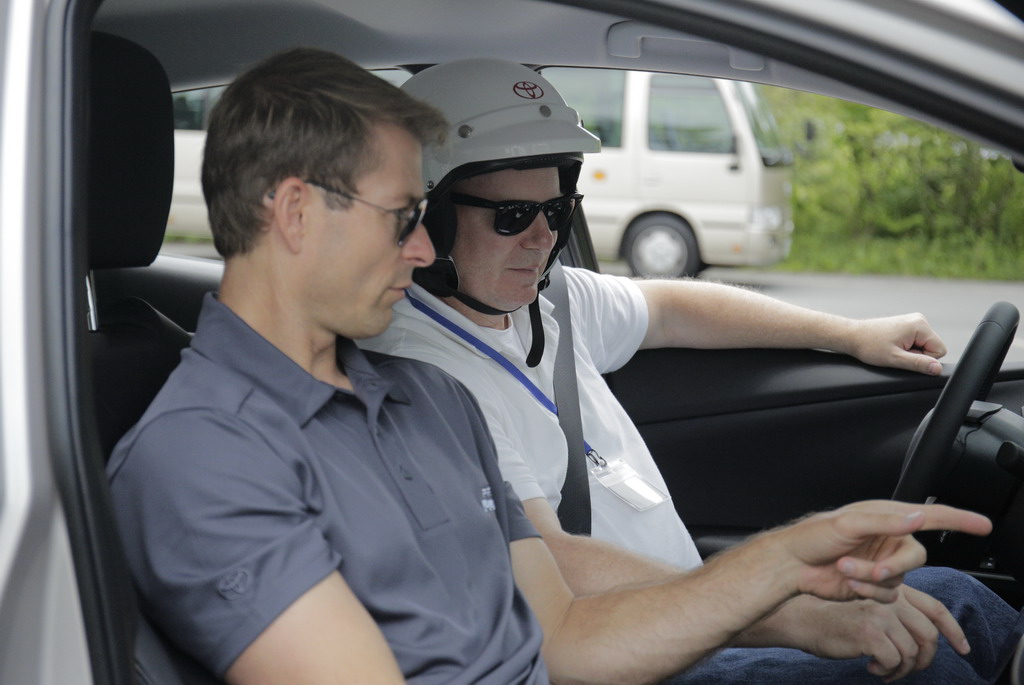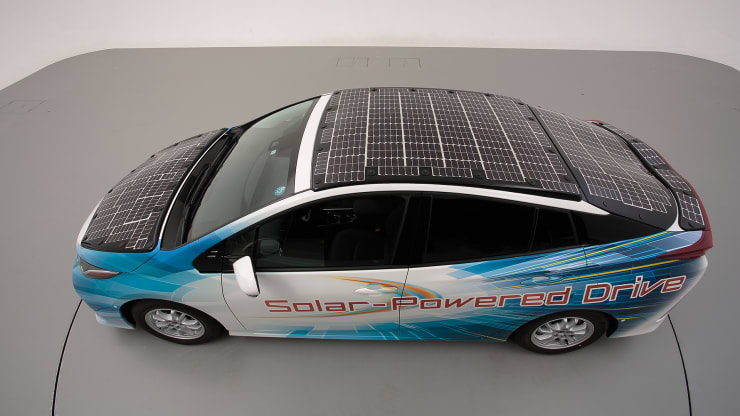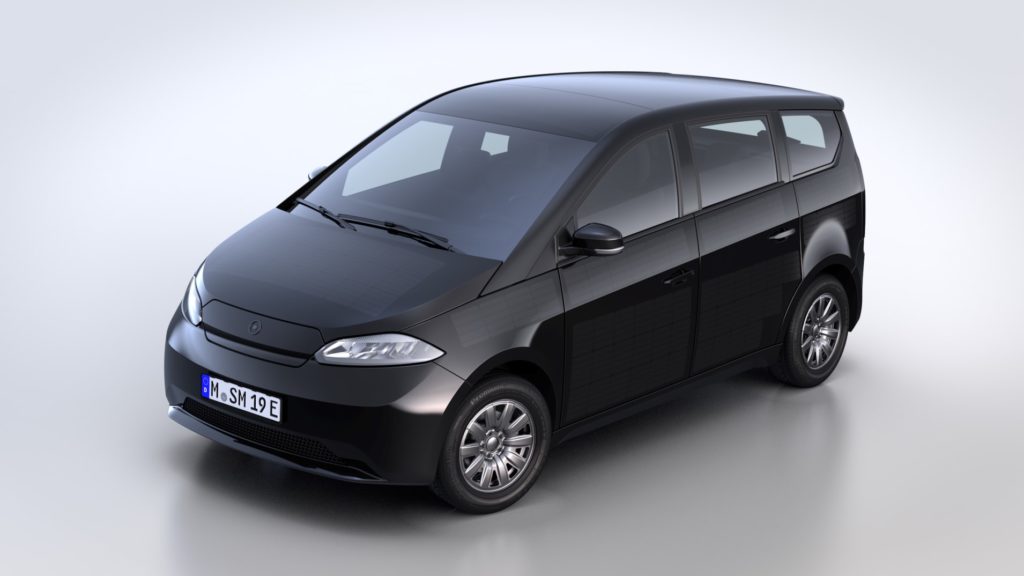
Key Points
- Hyundai recently released its first Sonata hybrid electric vehicle with roof solar panels.
- Toyota is testing high-efficiency solar in the hopes of generating an extra 20–29 miles of range.
- Car experts say consumers will pay a feel-good premium, but solar on cars may not be worth the price.
Can solar panels run cars? This highly debated topic has baffled car manufacturers, including Tesla CEO Elon Musk. But this chief executive officer himself said he is skeptical about the possibility.
In 2017, Musk seems to have ended the debate about these insights, saying that, considering the surface area where the solar panels would be installed, in tune with the time that the cars are parked in garages, it could be difficult to pursue the designs.
“The least efficient place to put solar is on the car”

Musk, the 49-year-old industrial designer and engineer said during the 2017 National Governors Association meeting, “The least efficient place to put solar is on the car.”
On hearing this, Hyundai and Toyota, companies launching solar panels on their automobile products with additional charges, seem to oppose what Musk believes in. They are also exploring to create bolder designs for the solar panels.
So who could be right on the insights? Musk could be wrong too since the 2015 Toyota Prius features a solar panel roofing that could power up the ventilation system of the cars. Now, the company is paving the way to new innovation with its newest solar power testing.
Inspired by satellites-developed ultrathin solar panels, Toyota is making it possible by offering malleable properties sufficient to form-fit the automobile’s body.
"The goal is to utilize efficient power as much as possible..."

Nathan Kokes, the spokesman for Toyota Motors North America Advanced Technology, stated, “The goal is to utilize efficient power as much as possible. Solar offers a great opportunity to utilize the power of the sun to regenerate batteries.”
Once in July, the Japan-based automotive manufacturer partnered with New Energy and Industrial Technology Development Organization (NEDO), as well as with Sharp, to start publicizing road trials in the country for electric vehicles with highly-efficient solar batteries. Their car features solar panels on the roofing, rear hatch doors, and the rear hatch garnish. Nine square feet is the total surface area of the panels.
However, its solar battery takes pride in having a 34% efficiency rating compared with the average 15 percent to 20 percent efficiency rating that many solar panels possess. This efficiency is defined as the amount of sunlight that the panel can convert into electrical power.
The car manufacturer hopes that with the added efficiency, this will help them reach their goals by adding 29 miles worth of solar energy in the cars they manufacture.
One of the challenges brought by cars running on solar power is the fear of it running out of power before getting access to charging.
However, Toyota strongly disagrees with the Tesla CEO with regards to the limitations on generating solar power but argues that improvements should be set.
“Toyota takes the approach that incremental change or incremental benefit is worth the effort. It’s not an all-or-nothing situation. Where I think Elon is coming from, potentially would be it won’t charge enough of the car. But if you’ve got opportunities to make some impact, then it’s worth the effort and continual study” Toyota’s Kokes pointed out.
However, this spokesperson would not confirm whether the solar panel innovation will be added in their vehicles, as well as discuss the pricing. He clarified that the company nonetheless will evaluate the current test in the spring season.
Hyundai’s Sonata HEV goes the furthest

Meanwhile, in August, Seoul-based automotive manufacturer Hyundai has likewise released to the South Korean consumers its version of the Sonata HEV, with solar panel features, opposing the insights from Elon Musk.
Hyundai said in its official statement, “It is difficult for [the] solar roof to be popularized even if it develops further because the solar energy delivered to the car is not much. However, in terms of auxiliary power, it was applied to the Sonata HEV because of its advantages … which utilize the surplus area of the vehicle to generate power without the pollution of fuel consumption.”
Similar to the prototype from Toyota, this model from Hyundai will utilize the best of solar energy alongside the 12V power, or, in other words, higher voltage batteries. In turn, the solar energy will be utilized to aid in the propulsion, as well as in the vehicle’s power features. These include air-conditioning and lighting.
It is interesting to note at this point that one of the greatest selling points for solar panels in cars is the ability to manufacture them not just as energy consumers, but energy producers. You can find cars with six hours of solar panel-charging capabilities, with up to 800 miles in the driver’s travel distance per year.
Yet, Tesla, Inc.’s CEO Elon Musk may already be pondering about the statements, but he has got supporters, especially since the Consumer Reports car and energy policy manager Shannon Baker-Branstetter said that the advantages of these solar panels on cars may depend on the physical attributes of the vehicle. For instance, cars with solar panels may be unattractive especially when parked outside.
There are groups who believe otherwise.
Edmunds, a resource for car information, has Dan Edmunds, director of vehicle evaluation, saying, “Integrating it into the roof like that could have a chance at attracting some consumers. People do all sorts of things for the feel-good factor, and solar power is certainly something that anybody can point to and anybody can feel good about.”
He added that cars like the Hyundai Sonata HEV can do well even if there are solar panels placed on its roofing.
Edmunds also stated that these panels could add $1,075 upon the purchase of the car. Furthermore, car consumers in North America may expect massive production for the Sonata as the 2020 approaches, specifically in the first half.
The start-up's race to the solar dream

These companies, indeed, have big shoes to fill. With Musk arguing against the solar panels, especially, it is like the auto-manufacturers have been given the challenge to prove the Tesla CEO wrong.
Sono Motors in Germany has also been working on a solar-powered car known as the Sion.
The company was founded in 2016 by Jona Christians and Laurin Hahn, co-CEOs, with Navina Pernsteiner, creative director. Both Christians and Hans said it is part of their long-time dream to have electric vehicles solar-powered reach the market. And they are saying Sion is the realization of the “solar dream.”
Sion features 248 solar panels, from its hood to the roof and toward the doors. Its unique design has been created in such a way that the car can accommodate a huge number of solar power.
Furthermore, the company reiterated that the car will have approximately 3,600 miles annually in its driving distance running on solar power. The daily travel distance on average is from three to 14 miles, depending on the season you are in.
Now, car information website Edmunds has hesitations on the design, saying that people may be swayed by it, and seemingly supporting what Musk is claiming. Edmunds said, “The three panels on the side doesn’t seem like a very efficient arrangement. I can see what they are trying to do, but I have a hard time imagining that concept getting off the ground, not for many years.”
They also believe that solar design may be challenging and a little expensive to repair once an accident occurs. How so?
The solar power system of Sion is polymer-embedded, which Sono believes is strong enough to protect the solar cells from damages like scratches. Added to this, the efficiency of the system also will never be compromised provided that most of the panels will not be damaged by accidents, and you will have to replace the panel should there be several automobile crashes.
Sono Motors has also declined to offer estimates on how much repairs can cost and are planning to make repair manuals and instructions for automobiles available to make their maintenance easier for car owners and service pros.
In particular, the company has stated that Sion has already received 10,000 pre-orders with the $28,000 price point. This is to consider the requirement of a minimum deposit of about $550, at the current euro to dollar foreign exchange rates. The company is looking to begin production in the middle of the year 2020, or around the second half.
The company is also centering now on the European market, and currently has no plans of introducing the car for the American consumers.
However, there is an issue that emerges, and this is about collecting dust indoors. Baudrit is not worried about this. Baudrit said, “Most people in Europe don’t have a garage or a house,” adding the car should be shared, parked in the street, and must not just stay in the garage.
Sion’s business vision is a shareable experience, sharing energy, rides, and automobiles. Drivers are able to use the app goSono to share the car’s energy with other owners of the brand, thus, making the unit have the moving battery. Drivers can plug in their Sion automobile with another of the same model, taking energy from the other car’s battery.
Baudrit said, “This isn’t just about cost it’s about the autonomy of the people.”
However, Musk is not letting go of the possibility that solar panels can indeed run the cars. He is saying, from the perspective of industrial design, that a “wrap” may surround the parked vehicle to make the most of its surface area. In turn, this structure can be attached to the automobile. Tesla has pushed the design and has implemented this upon solar roofs for residential houses.
The cars’ selling points are also worth noticing. Sustainability and the “go green” campaign are present in the cars of the future, but Edmunds is saying the costs may be high.
The car information resource revealed, “We’re not talking about a lot of energy here. I’m not sure consumers would be looking to pay for that unless there was some more obvious benefit. But it certainly is nicely integrated into the roof. It’s similar to things we’ve seen before, although a little bit more expensive, it seems like you’re not going to get a lot out of it.”
They also noted the current mindset of the EPA, dating back from the Barack Obama administration, which fuels economic thresholds contributing to barriers besetting these automobiles. Right now, with the administration of President Donald Trump, for instance, the industry is having a legal conundrum with California state over the fuel efficiency of solar-powered vehicles.
He said, “Certainly, in an environment where we’re trying to reduce our CO2 output and improve fuel economy, you wouldn’t ignore this.”
Is this idea really practical?
Many can say that electric-powered vehicles are sustainable for the environment, but are you willing to own them? Yes, you can save money with electric-run vehicles, or solar-powered cars, and the dream of saving the environment is present, but are they a practical choice? Imagine yourself driving such cars on the road. It’ll be odd to bring them around when you have friends who own luxury vehicles without the solar panels above.
Perhaps, the Tesla CEO also wanted to sound subtle about saying it will impede on aesthetics because solar-powered vehicles need to have the solar panels installed. Being an industrial designer, he kind of knows the way on how automobile designs go, and his industry is solely about electric-powered vehicles. Looking at the designs of Tesla models, you can really see how well-thought-of their aesthetics are, considering modern concepts and the demands of the times.
In conclusion, when it is about solar on cars, or solar-powered vehicles brought up, there are two opposing groups. One of these, with Elon Musk being part of it, as he is loud about his skepticism about the subject, is the group that disagrees on making it happen. The other group is those that have taken great strides in manufacturing automobiles of this type. As Toyota has pointed out, “…the beauty of this system is it will actually regenerate while driving.”